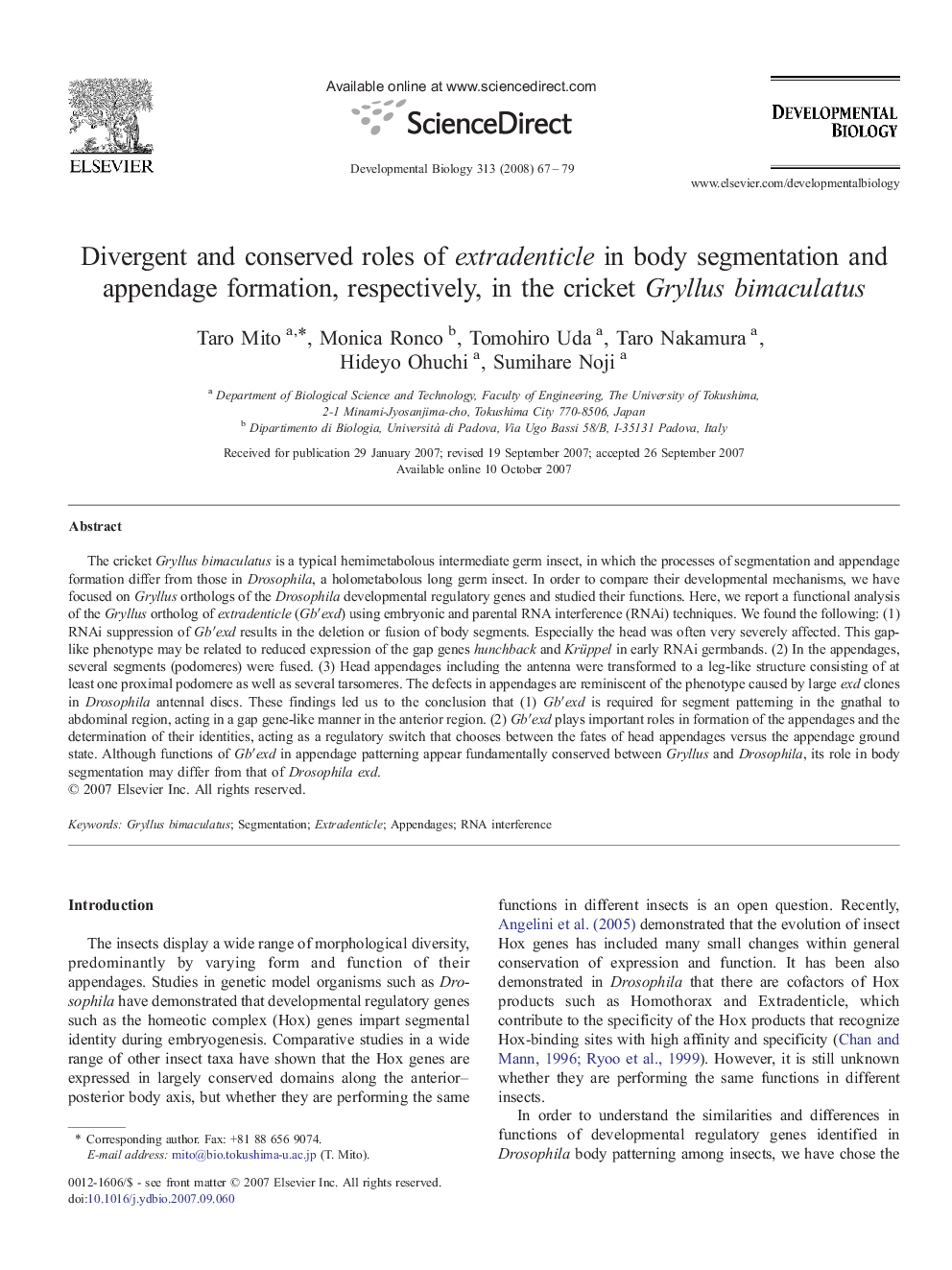| Article ID | Journal | Published Year | Pages | File Type |
|---|---|---|---|---|
| 2174920 | Developmental Biology | 2008 | 13 Pages |
The cricket Gryllus bimaculatus is a typical hemimetabolous intermediate germ insect, in which the processes of segmentation and appendage formation differ from those in Drosophila, a holometabolous long germ insect. In order to compare their developmental mechanisms, we have focused on Gryllus orthologs of the Drosophila developmental regulatory genes and studied their functions. Here, we report a functional analysis of the Gryllus ortholog of extradenticle (Gb′exd) using embryonic and parental RNA interference (RNAi) techniques. We found the following: (1) RNAi suppression of Gb′exd results in the deletion or fusion of body segments. Especially the head was often very severely affected. This gap-like phenotype may be related to reduced expression of the gap genes hunchback and Krüppel in early RNAi germbands. (2) In the appendages, several segments (podomeres) were fused. (3) Head appendages including the antenna were transformed to a leg-like structure consisting of at least one proximal podomere as well as several tarsomeres. The defects in appendages are reminiscent of the phenotype caused by large exd clones in Drosophila antennal discs. These findings led us to the conclusion that (1) Gb′exd is required for segment patterning in the gnathal to abdominal region, acting in a gap gene-like manner in the anterior region. (2) Gb′exd plays important roles in formation of the appendages and the determination of their identities, acting as a regulatory switch that chooses between the fates of head appendages versus the appendage ground state. Although functions of Gb′exd in appendage patterning appear fundamentally conserved between Gryllus and Drosophila, its role in body segmentation may differ from that of Drosophila exd.
